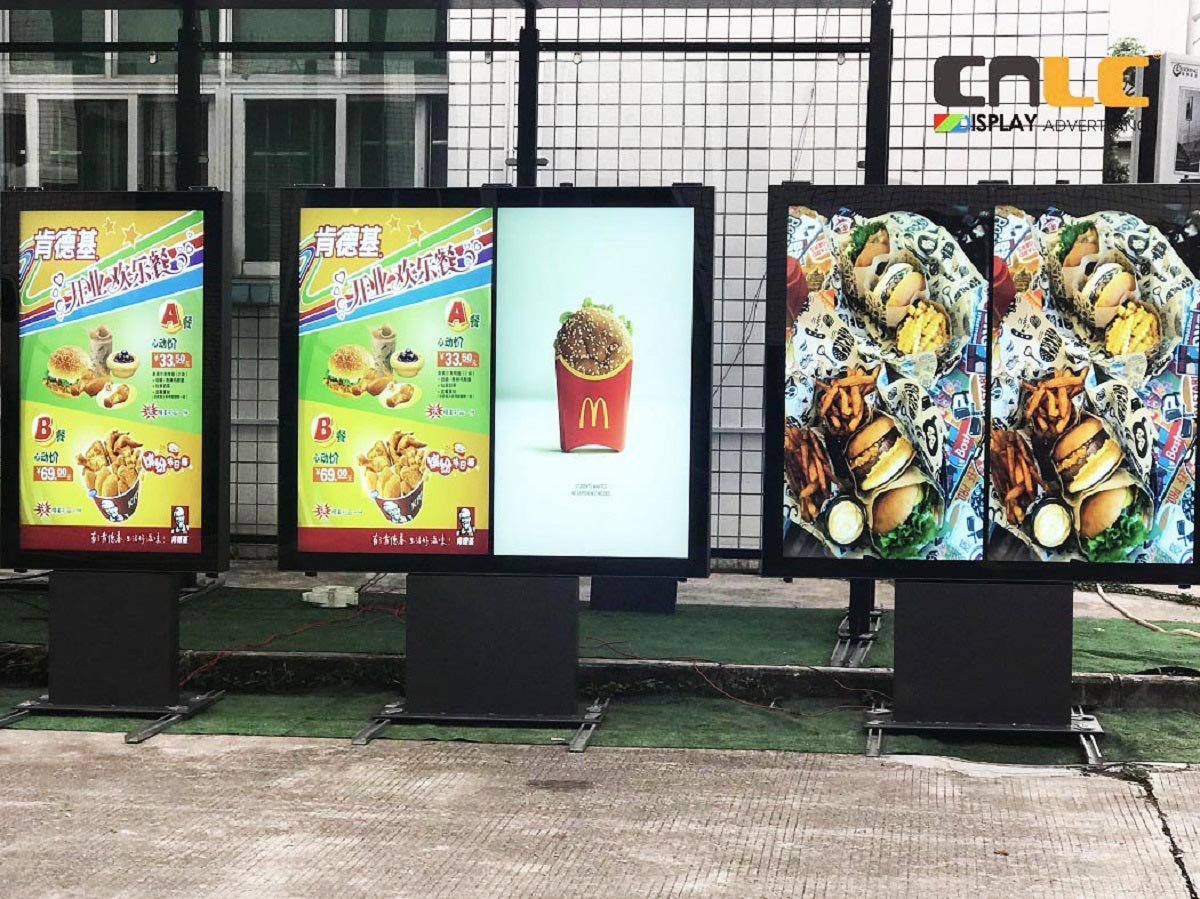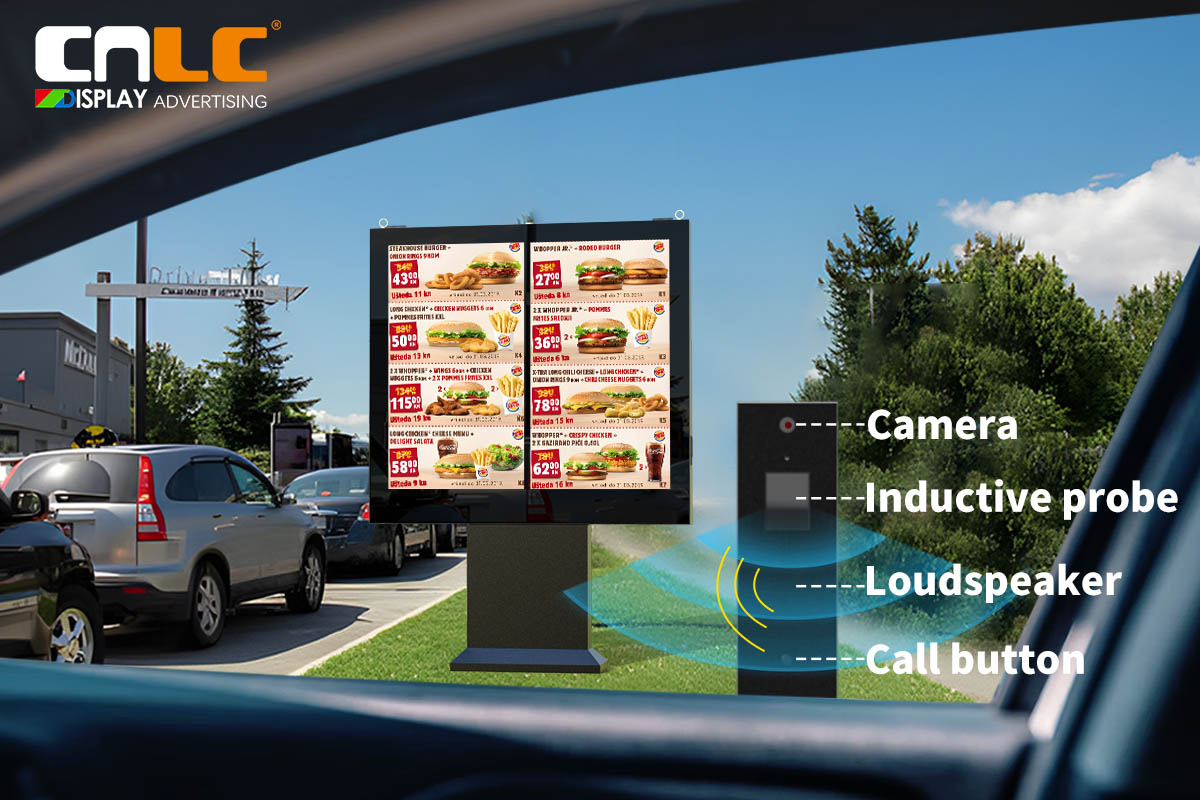This article was last revised in 343 Days ago, some of its contents may have changed. If you have any questions, you can ask the author。
In the fast-food industry, the speed and convenience of drive-thru service are crucial for enhancing customer experience and optimizing operational efficiency. However, traditional drive-thru service models often have numerous limitations, especially during peak hours when customers may face long wait times. To address these challenges and meet the needs of modern customers, CNLC has introduced our advanced Drive-thru Digital Menu Board. This is not just a digital menu board but a self-service kiosk featuring a unique separation of the screen and audio system, as well as an integrated set of functionalities including surveillance camera, speaker system, manual buttons, and sensor technology.
Limitations of Traditional Drive-thru Service
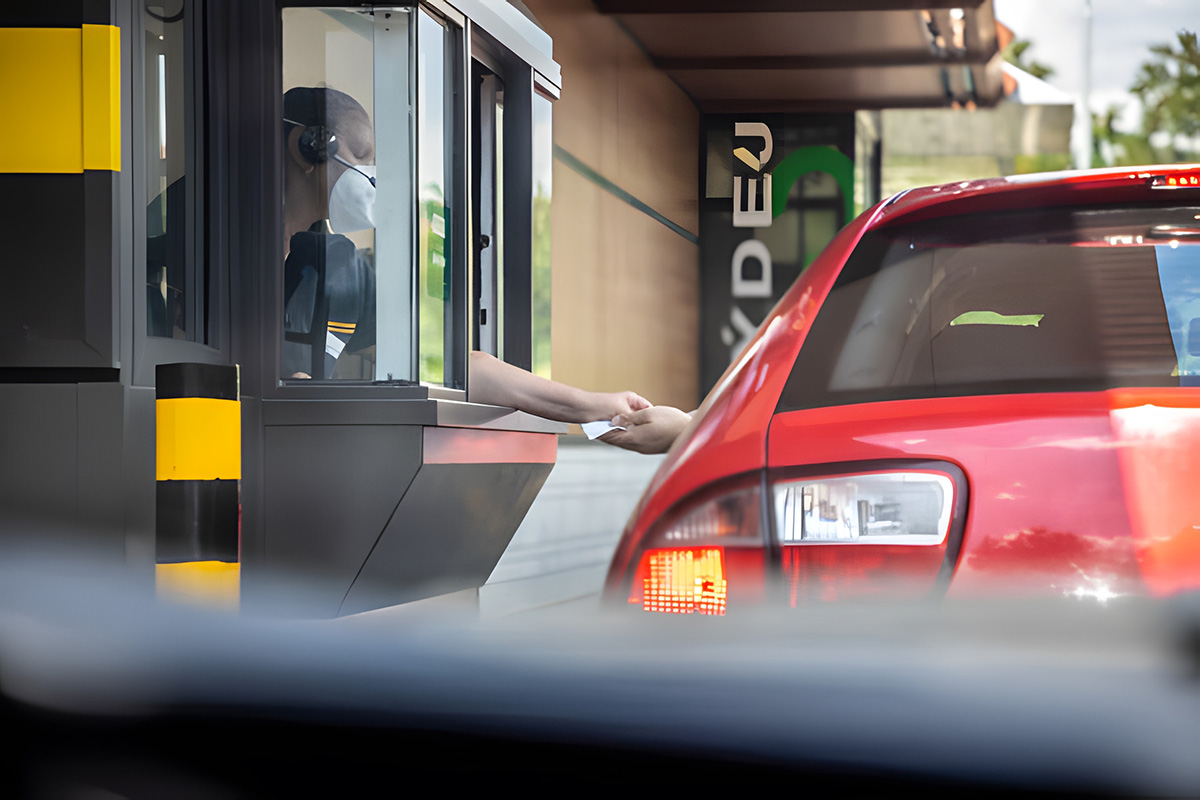
Traditional drive-thru services typically rely on static menu displays and manual order-taking systems. This approach makes it difficult to flexibly adjust menu content and often leads to congestion and order errors during peak times. Additionally, visibility and operational convenience during nighttime and adverse weather conditions can be problematic.
Innovations with the CNLC Drive-thru Digital Menu Board
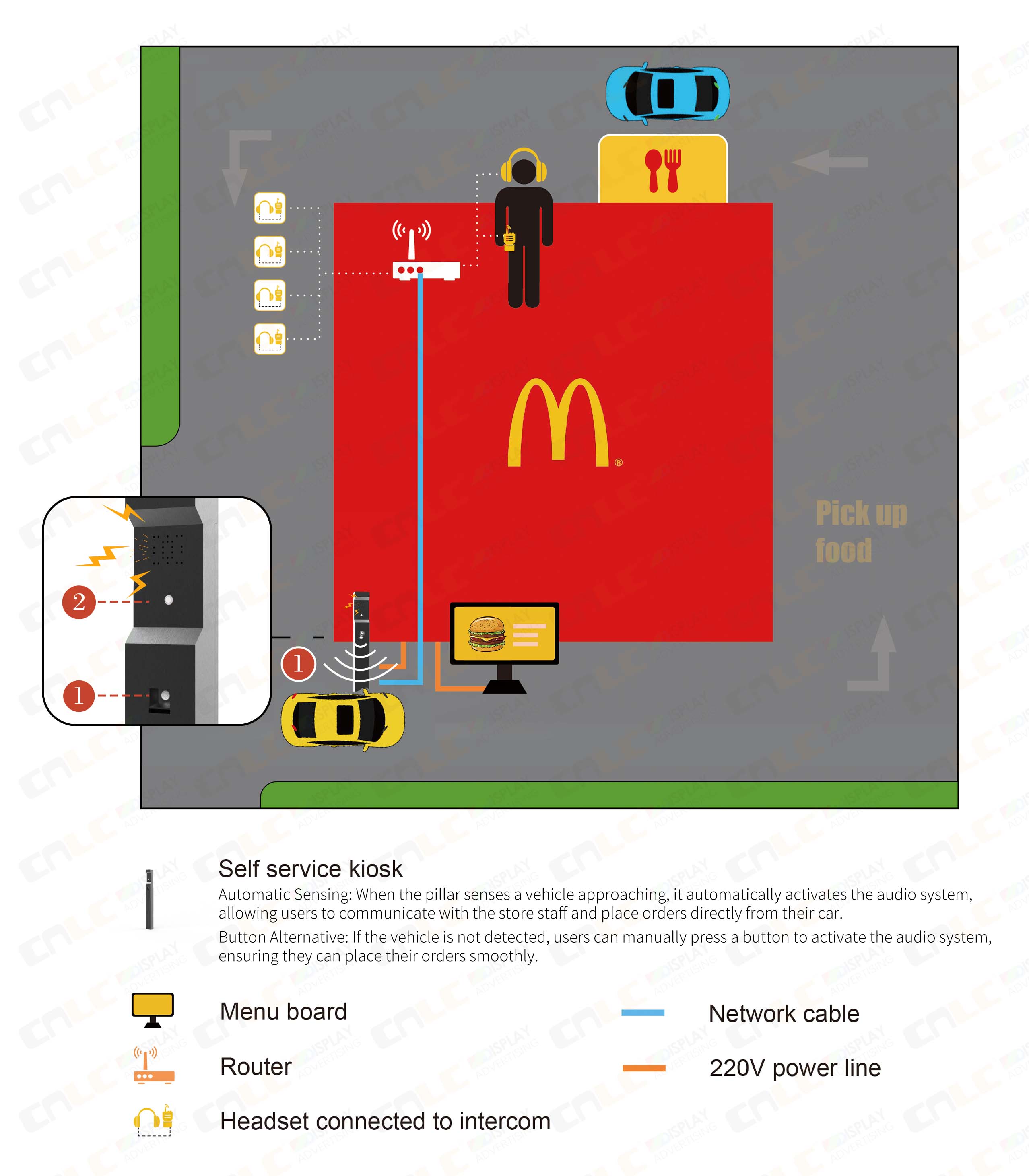
The CNLC Drive-thru Digital Menu Board is a self-service kiosk that combines advanced features to revolutionize the drive-thru experience, ensuring greater convenience, efficiency, and security.
1. Integrated Audio System on the Pillar
The CNLC Drive-thru Digital Menu Board includes an advanced audio system integrated into the pillar. This pillar is equipped with a microphone, speakers, manual buttons, and sensor technology. When the pillar senses an approaching vehicle, it automatically activates the audio system. Customers can then communicate directly with store staff via a phone receiver, ensuring a smooth and efficient ordering process. The audio clarity and user-friendly design enhance the overall drive-thru experience, making it seamless and intuitive.
2. Manual Buttons for Easy Operation
In addition to the automatic sensing system, the CNLC Drive-thru Digital Menu Board includes manual buttons. If the sensor does not detect a vehicle, customers can manually press a button to activate the audio system. This ensures that no customer is left unattended, even in the event of sensor failure or other technical issues. The manual activation feature increases the system's reliability and versatility, allowing it to adapt to various situations.
3.Enhanced Security with Integrated Surveillance
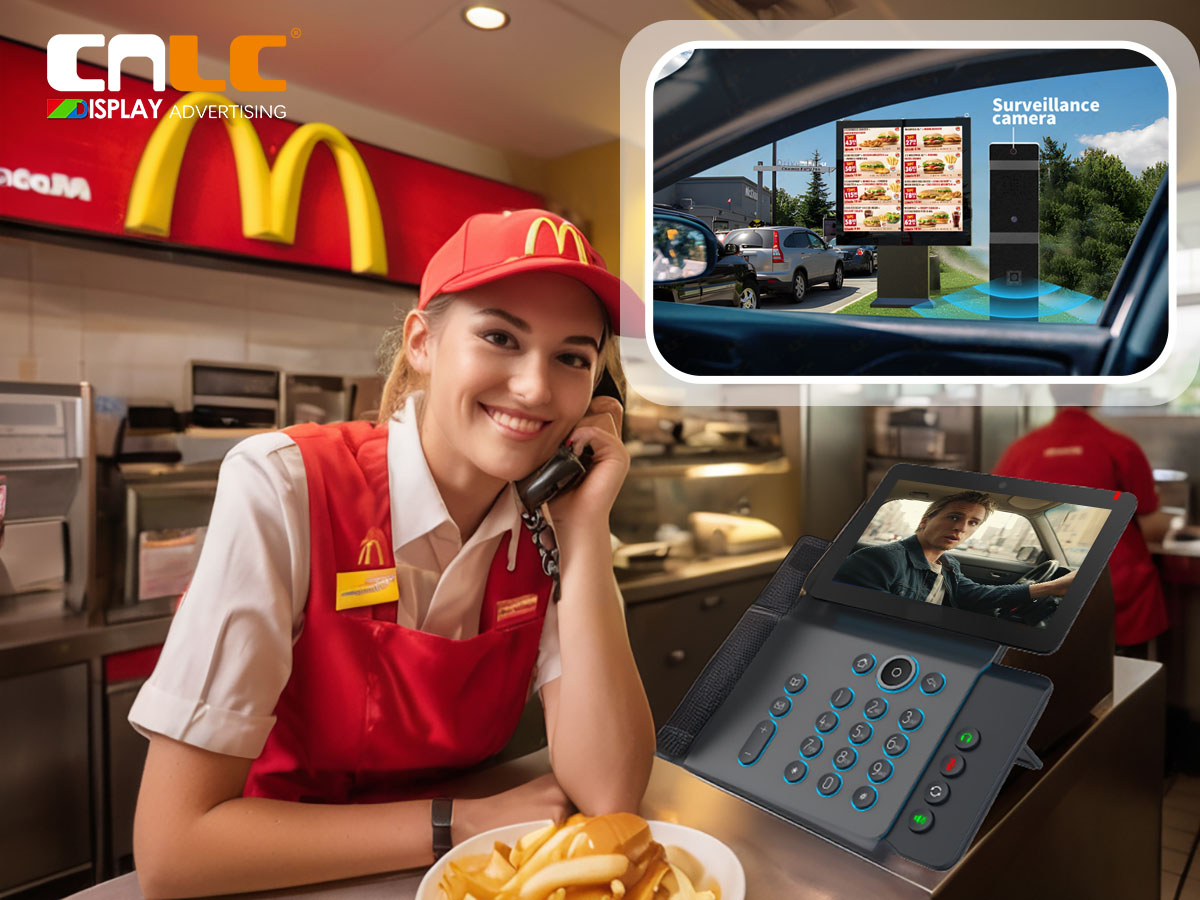
To further improve security and service quality, the pillar is equipped with a surveillance camera. This camera monitors the drive-thru lane, providing real-time footage that is displayed on a screen connected to the phone receiver used by staff. This integration allows staff to visually verify customer orders and interactions, adding an extra layer of security and reducing the risk of fraudulent activities. The surveillance footage can also be stored for future reference, helping to maintain a secure and controlled environment.
4. Efficient Screen Display for Clear Menu Visibility
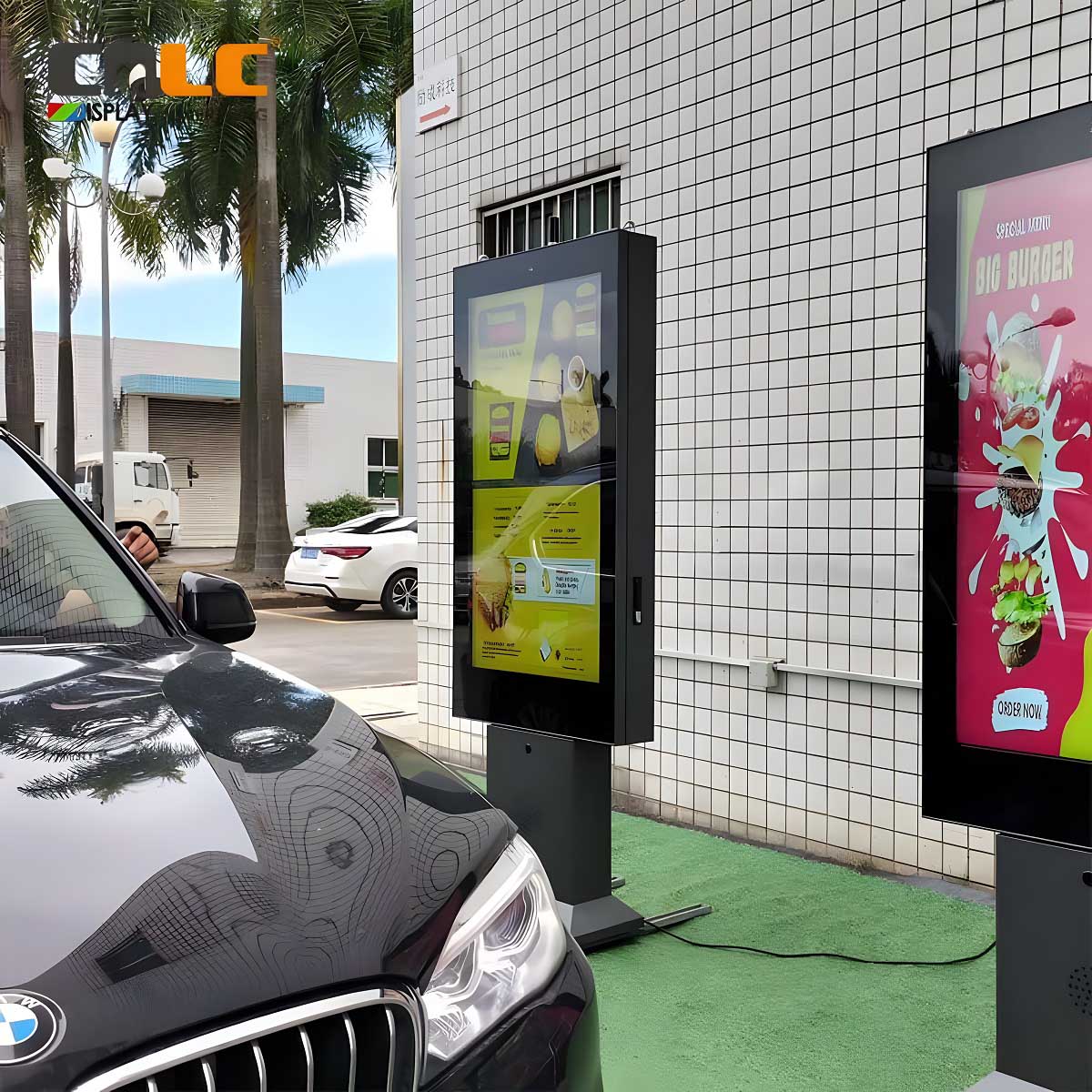
The CNLC Drive-thru Digital Menu Board uses a high-definition LCD display screen, ensuring that menu content is clearly visible in any lighting condition. Customers can intuitively browse menu options and the latest promotions, making quick decisions. The separation of the screen from the audio and surveillance systems avoids disruptions and ensures stable menu visibility. The clear and vibrant display helps customers make informed choices quickly and efficiently.
5. Enhanced Customer Experience with Real-time Interaction
With the integrated self-service system, customers can complete their order operations more autonomously. The real-time interaction through the audio system and the visual verification via the surveillance camera ensure that orders are accurate and customer satisfaction is high. The system reduces the need for direct contact with staff, improving ordering efficiency and enhancing the overall drive-thru experience. The combination of visual and audio feedback helps reduce order errors and ensures a smooth transaction process.
